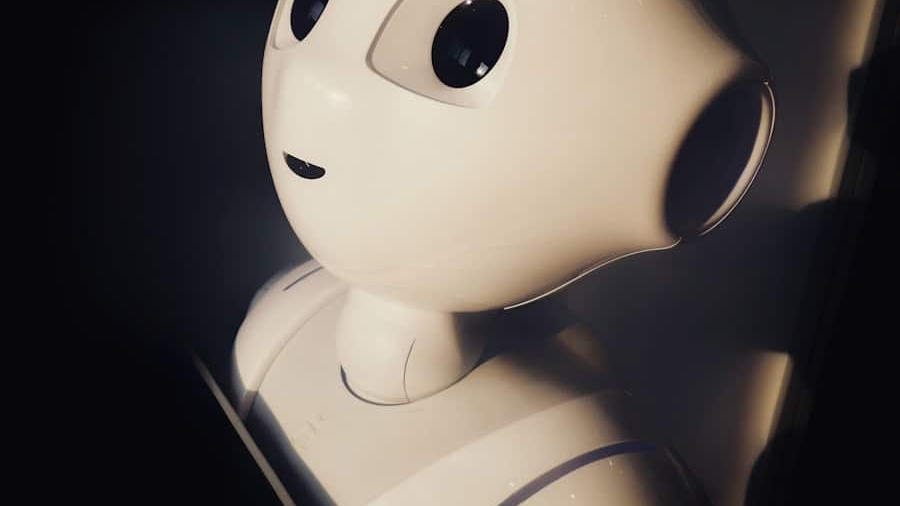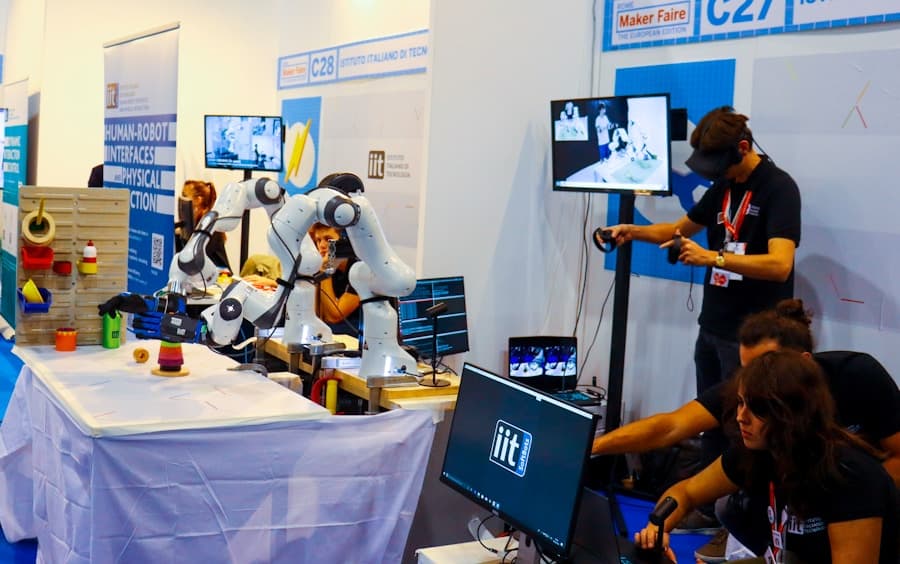The integration of artificial intelligence (AI) into game development has revolutionized the industry, transforming how games are designed, tested, and experienced by players. AI technologies have evolved significantly over the past few decades, moving from simple algorithms that dictated non-player character (NPC) behavior to complex systems capable of learning and adapting in real-time. This evolution has not only enhanced the realism and interactivity of games but has also streamlined various aspects of the development process, allowing creators to focus on innovation and storytelling.
As the gaming landscape continues to expand, the role of AI becomes increasingly critical. Developers are leveraging AI to create immersive worlds that respond dynamically to player actions, ensuring that each gaming experience is unique. From enhancing graphics and sound design to optimizing gameplay mechanics, AI is at the forefront of modern game development.
This article delves into the multifaceted applications of AI in the gaming industry, exploring its impact on design, testing, content generation, player analysis, marketing, and the challenges it presents.
Key Takeaways
- AI in game development is revolutionizing the industry by enhancing game design, testing, content generation, player behavior analysis, marketing, and more.
- AI is being used in game design and level creation to automate repetitive tasks, generate unique and challenging levels, and adapt to player behavior.
- AI is improving game testing and bug fixing by identifying and addressing issues more efficiently, leading to higher quality and more polished games.
- AI is playing a significant role in procedural content generation, creating dynamic and diverse game worlds and experiences for players.
- AI is being utilized for player behavior analysis, helping developers understand and predict player actions and preferences to improve game experiences and engagement.
AI in Game Design and Level Creation
AI has become an indispensable tool in game design and level creation, enabling developers to craft intricate environments that captivate players. One of the most significant contributions of AI in this area is its ability to analyze player behavior and preferences, allowing designers to create levels that cater to diverse play styles. For instance, AI algorithms can assess how players navigate through a game, identifying common paths and obstacles.
This data can inform level design decisions, ensuring that challenges are appropriately balanced and engaging. Moreover, AI-driven tools can assist in automating repetitive tasks associated with level creation.
Games like “No Man’s Sky” exemplify this approach, where entire planets are generated algorithmically, offering players a seemingly infinite universe to explore. By harnessing AI for level design, developers can focus on crafting compelling narratives and gameplay mechanics while allowing the technology to handle the more mundane aspects of environment creation.
AI in Game Testing and Bug Fixing
The testing phase of game development is crucial for ensuring a polished final product, and AI has emerged as a powerful ally in this process. Traditional testing methods often involve extensive manual playtesting, which can be time-consuming and prone to human error. AI-driven testing tools can simulate thousands of gameplay scenarios in a fraction of the time it would take human testers.
These tools can identify bugs, glitches, and balance issues by executing various strategies and play styles that might not be considered during manual testing. For example, companies like Ubisoft have implemented AI systems that analyze gameplay data to detect anomalies or inconsistencies within their games. By employing machine learning algorithms, these systems can learn from previous testing outcomes and improve their detection capabilities over time.
This not only accelerates the testing process but also enhances the overall quality of the game by ensuring that potential issues are addressed before release. As a result, developers can deliver a more refined gaming experience while reducing the risk of post-launch patches and updates.
AI in Procedural Content Generation
Procedural content generation (PCG) is one of the most exciting applications of AI in game development, allowing for the creation of vast amounts of content with minimal human intervention. This technique relies on algorithms to generate game assets such as levels, characters, items, and even narratives based on predefined rules and parameters. The use of PCG not only saves time and resources but also introduces an element of unpredictability that keeps players engaged.
A notable example of PCG in action is found in “Minecraft,” where players can explore an infinite world filled with diverse biomes, structures, and resources generated by algorithms.
Additionally, games like “Spelunky” utilize procedural generation to create challenging levels that require players to adapt their strategies with each playthrough.
By employing AI-driven PCG techniques, developers can create rich gaming experiences that offer endless replayability while minimizing the workload associated with manual content creation.
AI in Player Behavior Analysis
Understanding player behavior is essential for creating engaging gaming experiences, and AI plays a pivotal role in analyzing how players interact with games. By collecting data on player actions, preferences, and engagement levels, developers can gain valuable insights into what makes a game enjoyable or frustrating. Machine learning algorithms can process this data to identify patterns and trends that inform design decisions.
For instance, companies like Riot Games utilize AI to analyze player behavior in “League of Legends.” By examining metrics such as win rates, champion selection, and player interactions, they can make informed adjustments to game balance and mechanics. This data-driven approach allows developers to respond quickly to player feedback and enhance overall satisfaction. Furthermore, AI can help identify potential issues such as toxic behavior or skill imbalances within the community, enabling developers to implement targeted solutions that foster a healthier gaming environment.
AI in Marketing and Player Engagement
Targeted Marketing Campaigns
AI has transformed marketing strategies within the gaming industry by leveraging data analytics and machine learning algorithms. This enables developers to create targeted marketing campaigns that resonate with specific player demographics. AI analyzes user data from various sources, including social media interactions, gameplay habits, and purchasing behavior, to tailor promotional content that appeals to individual preferences.
Personalized Recommendations
Personalized recommendations powered by AI can enhance player engagement by suggesting games or in-game purchases based on past behavior. Platforms like Steam utilize recommendation algorithms that analyze user activity to suggest titles that align with a player’s interests. This not only increases sales but also fosters a sense of community among players who discover new games through tailored suggestions.
AI-Driven Customer Support
Additionally, AI-driven chatbots are increasingly being used for customer support and engagement on social media platforms, providing instant responses to player inquiries and enhancing overall satisfaction.
Challenges and Limitations of AI in Game Development
Despite its numerous advantages, the integration of AI into game development is not without challenges and limitations. One significant concern is the potential for bias within AI algorithms. If the data used to train these systems is skewed or unrepresentative, it can lead to unintended consequences in gameplay or player interactions.
For instance, biased algorithms may inadvertently favor certain play styles or demographics over others, resulting in an uneven gaming experience. Another challenge lies in the complexity of developing robust AI systems that can adapt to the unpredictable nature of human behavior. While machine learning algorithms excel at recognizing patterns within large datasets, they may struggle with novel situations or creative problem-solving—areas where human intuition often shines.
Striking a balance between automated processes and human creativity remains a critical consideration for developers seeking to harness the full potential of AI without sacrificing the unique qualities that make games enjoyable.
The Future Outlook for AI in Indie Game Studios
As technology continues to advance, the future outlook for AI in indie game studios appears promising. Smaller studios often face resource constraints that limit their ability to compete with larger developers; however, AI tools can level the playing field by streamlining various aspects of game development. With access to affordable AI-driven solutions for design, testing, and marketing, indie developers can focus on innovation and creativity without being bogged down by logistical challenges.
Moreover, as open-source AI frameworks become more accessible, indie studios will have greater opportunities to experiment with cutting-edge technologies without incurring significant costs. This democratization of AI tools could lead to a surge in unique gaming experiences that push boundaries and challenge conventional norms within the industry. As indie developers continue to embrace AI as a collaborative partner rather than a replacement for human creativity, we may witness an exciting evolution in storytelling and gameplay mechanics that captivates players worldwide.
In conclusion, the integration of artificial intelligence into game development has ushered in a new era characterized by innovation and creativity across various facets of the industry. From enhancing design processes to improving player engagement strategies, AI’s impact is profound and far-reaching. As technology continues to evolve and democratize access to advanced tools, both large studios and indie developers will have unprecedented opportunities to shape the future of gaming through intelligent design and immersive experiences.
In a related article, Best Tablets for Kids 2023, the focus is on finding the most suitable devices for children to enhance their learning and entertainment experiences. Just like indie game studios are looking for ways to reduce development costs, parents are also seeking affordable yet high-quality tablets for their kids. This article provides valuable insights into the top tablets available in 2023 that cater to the needs of young users, showcasing the importance of cost-effective solutions in various industries.
FAQs
What is AI in the context of game development?
AI, or artificial intelligence, in game development refers to the use of algorithms and technology to create intelligent and responsive behaviors in non-player characters (NPCs) and other game elements. This can include things like enemy behavior, pathfinding, and decision-making.
How can AI reduce development costs for indie game studios?
AI can reduce development costs for indie game studios by automating certain tasks, such as level design, playtesting, and bug fixing. This can save time and resources, allowing smaller teams to focus on other aspects of game development.
What are some specific ways AI can help indie game studios save money?
AI can help indie game studios save money by generating procedural content, optimizing game performance, and providing data-driven insights for decision-making. Additionally, AI can assist with tasks like player behavior analysis and in-game advertising, which can help studios maximize their revenue.
What are the potential drawbacks of using AI in game development for indie studios?
Some potential drawbacks of using AI in game development for indie studios include the initial cost of implementing AI technology, the need for specialized expertise, and the potential for AI to replace human creativity and intuition in the game development process. Additionally, there may be ethical considerations related to the use of AI in game design and player interactions.
What are some examples of successful AI implementation in indie game development?
Some examples of successful AI implementation in indie game development include the use of procedural generation in games like “Minecraft” and “No Man’s Sky,” as well as the use of AI-driven analytics and player behavior prediction in games with live operations and in-game economies. Additionally, AI has been used to optimize game performance and automate certain aspects of game design in various indie titles.



